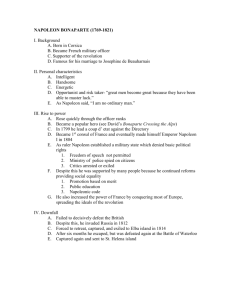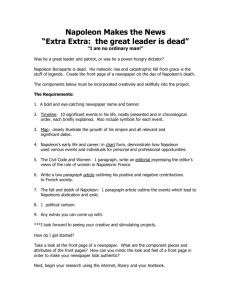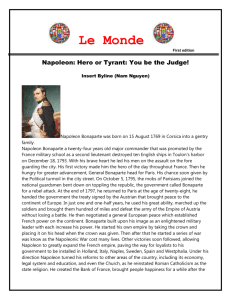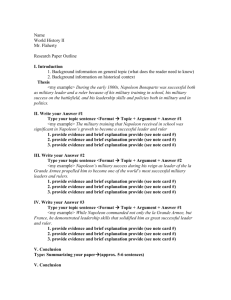Assignment 402: What's In A Name?
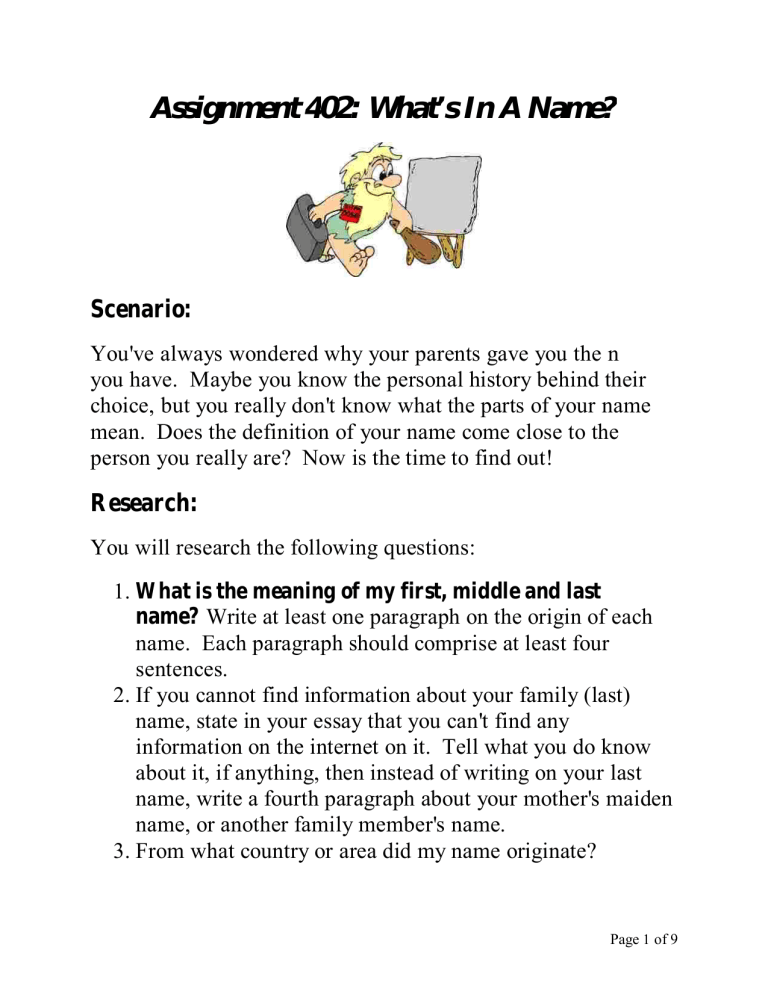
Assignment 4
02:
What’s In A Name?
Scenario:
You've always wondered why your parents gave you the n you have. Maybe you know the personal history behind their choice, but you really don't know what the parts of your name mean. Does the definition of your name come close to the person you really are? Now is the time to find out!
Research
:
You will research the following questions:
1.
What is the meaning of my first, middle and last
name?
Write at least one paragraph on the origin of each name. Each paragraph should comprise at least four sentences.
2. If you cannot find information about your family (last) name, state in your essay that you can't find any information on the internet on it. Tell what you do know about it, if anything, then instead of writing on your last name, write a fourth paragraph about your mother's maiden name, or another family member's name.
3. From what country or area did my name originate?
Page 1 of 9
4. What is unusual, interesting or unique about the information I discovered about the origin of my name?
5. For each name, mention the most famous people having that name and their claim to fame. (For example, if your name were Bill, you might mention William of Normandy
[who conquered England in 1066], William Shakespeare, or President Bill Clinton.)
Some Resources:
Behind the Name - The Etymology and History of First
Names
: http://www.behindthename.com/
Christian Names Dictionary : http://www.jesusanswers.com/names/christian.htm
Irish Surnames Search Engine : http://www.irishtimes.com/ancestor/surname/
First Names and What They Mean : http://www.zelo.com/firstnames/index.asp
OR use a web search engine like Google
(
e xperiment by trying combinations like or
hoolihan etymology hoolihan
--assuming your name is
Hoolihan
)
Here's a good site for getting your name in Chinese characters: http://chineseculture.about.com/library/name/blname.htm
Page 2 of 9
The finished Product:
This assignment will be completed as a Microsoft Word
document.
Be sure to save the information that you collect as you will be using it in a PowerPoint presentation later in the
year.
1.) Create a three section (paragraph) composition that
glorifies your name!
Start by typing your name, date and grade in the upper right corner of the page.
2.) Again, if you cannot find information about your famil
y
(last) name, state in your essay that you can't find any information on the internet on it. Tell what you do know about it, if anything, then instead of writing on your last name, write about your mother's maiden name, or some other family member's name.
3.) In your essay, you
MUST
use the following Word features:
A.
B.
C.
copying and pasting
, double-
spacing
,
using WordArt (see button in red square)
D.
usin
g different fonts and font sizes in each section
--be
creative,
Page 3 of 9
E.
F.
inserting images "borrowed" from the internet properly:
How to copy ( steal
) images from the internet: Pages 5 -7 citing your internet sources ( web page title , web address
):
How to reference sources taken from web pages: Pages 8-9
Example:
(A Shakespeare Timeline, http://shakespeare.palomar.edu/timeline/timeline.htm
)
4
.) Save your file
s to your
flash drive
!
Name your file as
yourlastname
MYNAME
.
4.) Printed copy due by next class.
MYNAME RUBRIC
A all elements present
B+ missing one element
B missing two elem ents
C more than two elements
ELEMENTS :
appropriate content plus
•
•
•
•
•
•
• name-date protocol followed data from multiple sources for each of 3 names copied and pasted double -space text
WordArt used at least 3 images captured correctly
2 or 3 different text fonts used reference web addresses cited
Page 4 of 9
How to copy images correctly from the internet
1. After you find the image you want, right-
click
on the image.
2. Select Save Picture As ... and click on it.
IMPORTANT: DO NOT SELECT
Copy
(see below for explanat ion)
3. The computer will automatically go to the My Pictures folder to save
your borrowed image.
Be sure that you're happy with the file name, then
click Save .
Page 5 of 9
4. To insert the picture into a Microsoft Word document, click Insert /
Picture
.
5. This will open the My Pictures folder. Select your file and click
Insert
.
6. Now you have your picture in your Word document; you can adjust the size when it is selected by adjusting the corners.
Page 6 of 9
**Why shouldn't I click
Copy
in step 2?
If you click Copy , you will also get the link to that web site embedded in the image -which may cause problems later on.
Page 7 of 9
How to reference (cite) web pages
1. If you use a web page as a source of information, y te it properly with a parenthetical reference. It's easy: the only two elements that you have to know are (1) the title of the web page and (2) the web address.
2. Finding the web page's title is some tricky if you just look at the web
page.
On the page below, for example, there are several possible titles:
Napoleon, Napoleon Series, Reviews of Historical Biographies, or The
Rise of Napoleon Bonaparte? Which one is the right one?
3. To find out, you may have to look at the underlying source code
(called HTML) of this web page. To do so, click View / Source.
Page 8 of 9
4. This opens a plain text file that contains the source code. Toward the top of the file, you will usually find the designation <TITLE>. Below we see that our title is indeed The Rise of Napoleon Bonaparte.
5. To get the web address (also called URL), simply highlight and copy the address into our document.
6. The parenthetical reference should be placed at the d of the paragraph. Its format should be (title, web address).
7. EXAMPLE:
If you used the website above as a source, your parenthetical reference would look like th
is:
(The Rise of Napoleon Bonaparte, www.napoleonseries.org/reviews/biographies/asprey.cfm)
*Note that to save space, I eliminated the http:// from the web address.
Page 9 of 9
